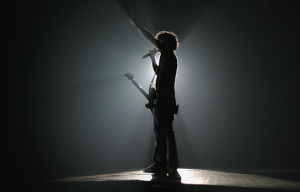Having fallen victim to residential and transport development, London’s live music venues have declined in number. But planning initiatives and a push from the mayor could soon expand their numbers. Michelle Perry reports
 London’s music venues are under threat. At least they were until the music industry allied forces with the mayor of London and developers to create a taskforce that will examine the causes of the closures of many historic music venues and what could be done to reverse the decline.
London’s music venues are under threat. At least they were until the music industry allied forces with the mayor of London and developers to create a taskforce that will examine the causes of the closures of many historic music venues and what could be done to reverse the decline.
Between 2007 and 2015, London lost 35% of its grassroots music venues, leaving just 88 today. Since the 1950s, London has been a breeding ground for new artists, many of whom – such as The Who, The Rolling Stones and David Bowie – went on to become global superstars.
But despite Britain’s musical heritage, venues have struggled. A number of external factors have contributed to their closure, including London’s rising population and the attendant need for more housing, which has pushed up residential values. Similarly, commercial values have risen.
Then there are unfortunate losses such as the Astoria on Charing Cross Road, WC2, which was part of a block demolished to make way for the Tottenham Court Road Crossrail station. When the site is redeveloped, a theatre, rather than a music venue, will replace it.
Permitted development rights mean more residential in former commercial buildings, and music venues – with their noise pollution and crowds of fans – don’t always make the best neighbours.
However, some good news for venues came last month with the announcement that from April, local planning authorities will have to consider noise effects on new residents from existing businesses under amended permitted development rights.
This will make it harder to change offices to flats if a music venue is nearby. Developers will have to work closely with the local authority and the music venue to ensure that live music is protected. Some developers, however, are ahead of the game.
Across the road from the former Astoria, in the original heartland of grassroots music in Denmark Street, Consolidated Developments is developing two venues – the first new music venues in London in decades – as part of the wider 210,000 sq ft St Giles Circus development.
Designed by architects Orms in consultation with Historic England, the Greater London Authority and the Music Venues Trust, the approved scheme will replace the former 12 Bar (where Adele played her first gig) with a 280-capacity music venue. An 800-capacity venue, already granted consent, will also form part of the development, ensuring the area’s musical heritage is not lost.
Richard Metcalfe, property consultant at Consolidated Developments, says: “We are determined to keep music in the street.”
The difference between older venues and those that Consolidated is building, due for completion in 2018, is that the new ones are designed to be multi-purpose.
They will be able to cater not just for live music but also events such as product launches or catwalk shows.
As for crowds spilling out of venues at night, with the Crossrail station across the road, crowds can be easily dispersed, which is one of the reasons Camden Council approved the plans.
“If you can’t have a live venue in the spiritual home of British music, then where can you have it? We aren’t the sort of developer to rip out the heart of an area,” says Metcalfe.
To limit noise from the venues, Orms has designed them using a box-in-a-box construction that not only keeps noise in but also keeps noise out.
The venues will be directly above Crossrail, so this design is critical, not only for those outside the venue but also for gig-goers who want a state-of-the-art acoustic experience. Musicians also want their music to sound great.
“If we create a high-quality space for sound, it will attract the best bands and visitors. We have the technology to have residential and music venues side by side, or even on top of each other. The challenge is, are we culturally ready?” says Orms director John McRae.
Music is an important part of London’s cultural offering and, as an industry, it is also economically important, just as new homes are.
This sort of collaborative effort is intended to prove that music and residential can live harmoniously, and that mixed-use venues are the way forward for London’s music scene, ensuring that long-term legacy of Britain’s Tin Pan Alley.
| Fact file | |
|---|---|
£3.8bn |
contribution of music industry to UK’s economy |
4 |
iconic names lost: Marquee Club, the Astoria, the 12 Bar Club and Madame Jojo’s |
348 |
number of live music spaces open in 2007 |
245 |
number that remained open in 2015 |
6.6m |
number of people who went to gigs and festivals in London last year |
Source: Mayor’s Music Venues Taskforce report: London’s grassroots music venues rescue plan











